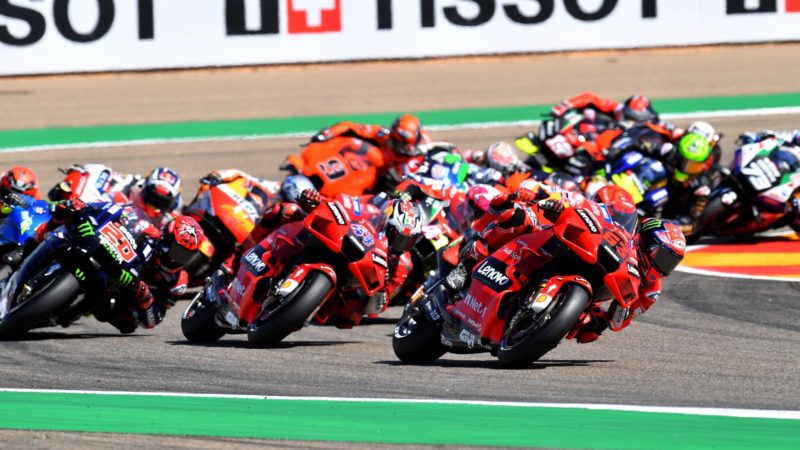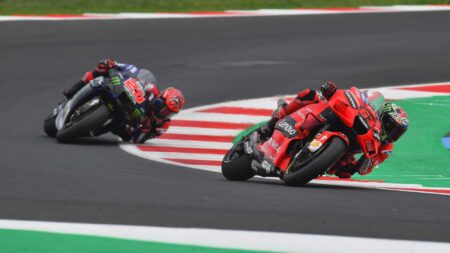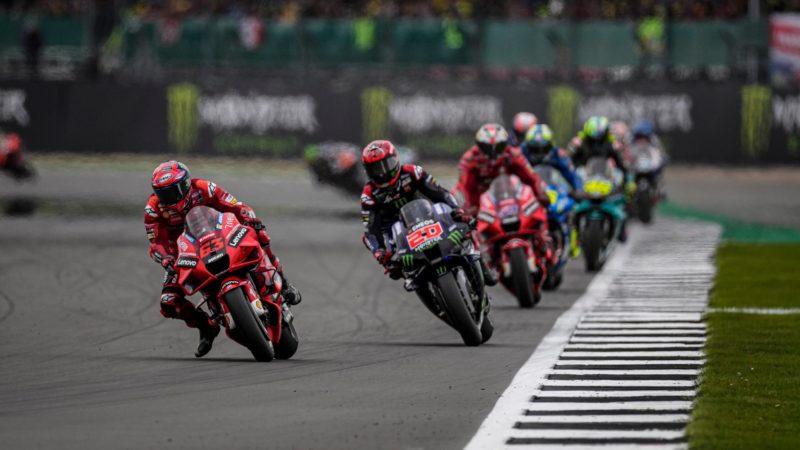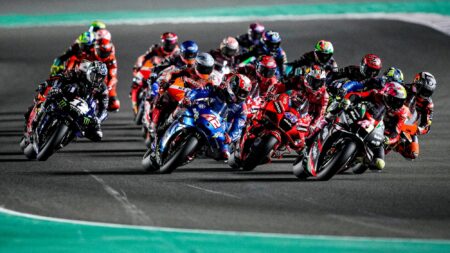However, there’s no doubt that Bagnaia, Mir and Quartararo did have grip issues at those races, just like other riders have struggled with tyres at other races. So what really happened? Was Michelin at fault? Or someone else?
Bagnaia qualified second at Silverstone, then went backwards in the race, scoring two points instead of a likely 20, which could end up deciding the outcome of the 2021 MotoGP world championship.
Michelin admits there was something wrong with Bagnaia’s rear slick in that race.
“From the data it looks quite clear that Pecco’s tyre didn’t work properly from the beginning of the race,” says Piero Taramasso, the man in charge of Michelin’s motorcycle racing operation. “He complained about just one part of the tyre – the edge on the right side, so now we are doing microscopic analysis to understand the problem. We are also checking the machine that built the tyre.
“This is the first time we have seen something like this in four or five seasons. We’ve had many complaints, but many times these are related to the tyre pressure used, the track conditions, the speed of the race and so on. There are many details that can affect tyre performance.”
What about Mir, who struggled to ninth at the British GP, complaining of a major front-tyre problem? The world champion had finished fourth at the previous race and took third at the next race, so something obviously went wrong at Silverstone.

Quartararo dominated at Silverstone, while reigning champ Joan Mir (no36) struggled with a dud front tyre
Michelin
“Joan used the soft front,” adds Taramasso. “From our analysis it was clear that his bike was understeering much more than the others in the long, fast right-handers at Silverstone, then his performance dropped. For us this is normal, it’s not related to a tyre problem, just high wear.
“Fabio won the race with the same soft front, but he was out front. We know that when a rider is riding alone the front tyre gets less stressed, because when you are in the pack you are trying to overtake, so you stress the tyre more. Also there’s the heat from the other bikes, so you have many things that penalise the performance.”
Suzuki disagrees with Michelin’s analysis of Mir’s front tyre. Its engineers say Mir ran the soft front in every practice session without problems, but in the race the tyre was sliding after three laps and partly delaminated.
And, finally, what about Quartararo’s rear at Aragon? The championship leader said the tyre felt “weird” from the start, with poor grip and traction.
Sometimes it’s better to hammer the tyres from lights out, other times it’s better to ease them in
“The situation with Fabio’s tyre at Aragon was clear,” says Taramasso. “We analysed the data, Yamaha analysed the data and we both agree it wasn’t a tyre problem. Yes, he had some strange feeling but he now says that it wasn’t the tyre. Many times this is the case.”
“It’s true that this year more riders complain about tyres than they did in the last years but the tyres are built by the same machine, with the same compounds. We haven’t changed anything in the way we work.
“Our quality control is very high, from raw material to finished product, but you have to remember that tyres are made out of rubber, which is a living material – it’s not stable, like steel. I don’t say we’re perfect but…”
Yamaha engineers I’ve spoken with agree with Michelin’s analysis of Quartararo’s Aragon rear slick, but the problems Bagnaia and Mir suffered at Silverstone prove that Michelin certainly isn’t perfect.
In other words, some of the complaints riders make about Michelin are justified but others aren’t.
Michelin does admit that its MotoGP tyres are sensitive to treatment, both in the garage and on track, so teams have to work very hard to prepare the tyres and then advise their riders how to use the tyres during the race.
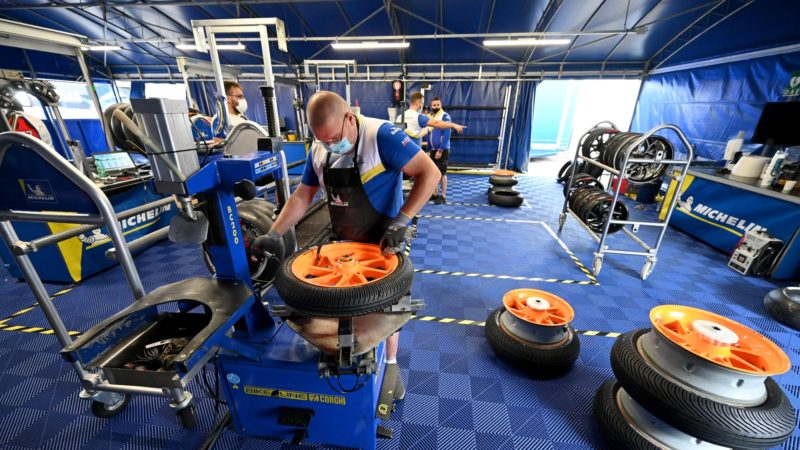
Michelin’s MotoGP fitting area – making tyres for 300 horsepower race bikes is a balancing act
Michelin
Most MotoGP teams now have two technicians whose only job is to prepare the tyres, retrieve data from the tyres, analyse the data with the team’s dedicated Michelin technician, then share their knowhow with their engineers and riders.
“These people look at compounds, the working range of the compounds, the cold and hot pressures of each of the compounds,” explains Taramasso. “They also work a lot on tyre wear, trying to anticipate tyre consumption and when the tyres will drop during the race.
“We also exchange computer models of the tyres so teams can understand better how the tyres work – when they need to put stress on the tyres and so on.”
